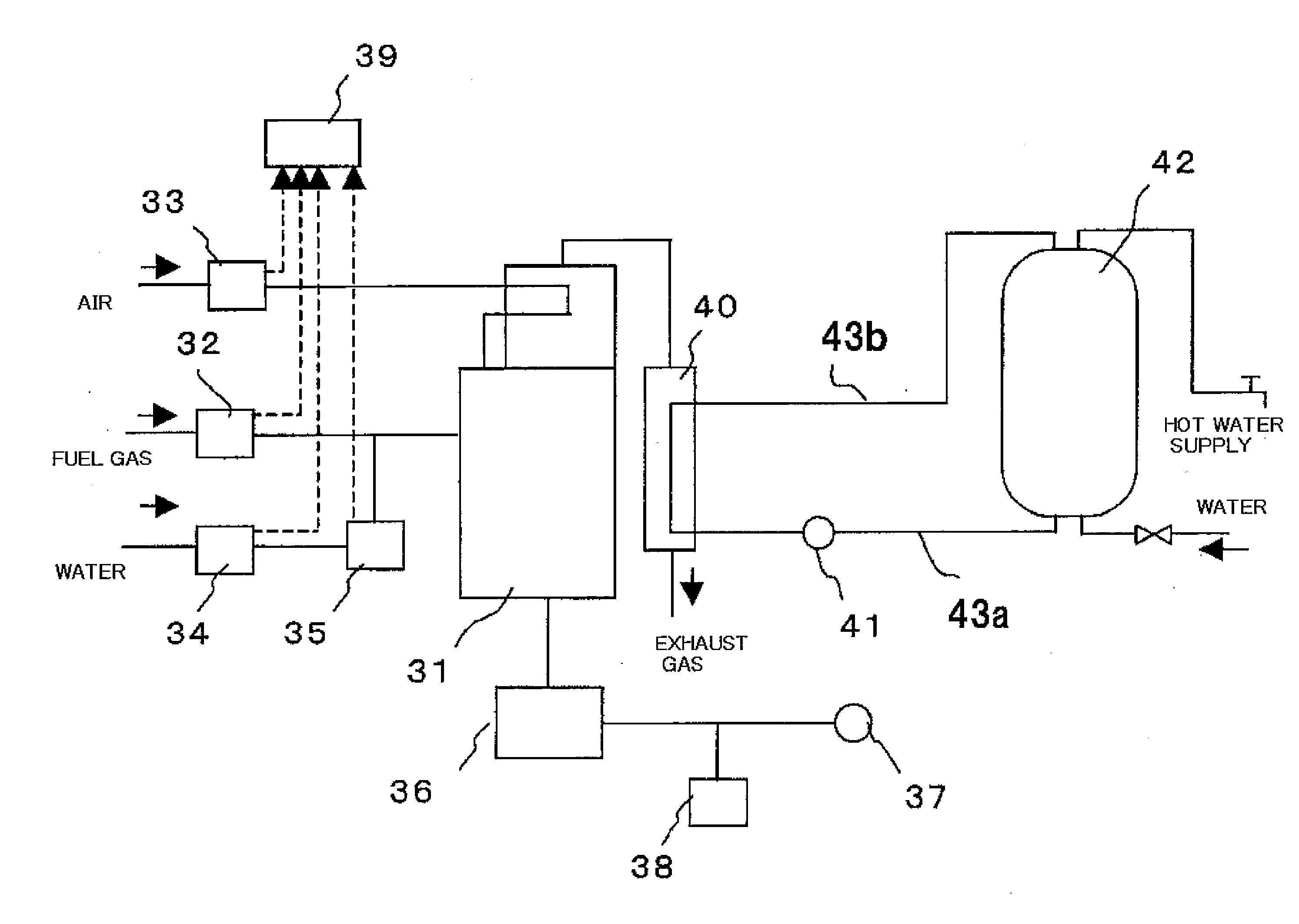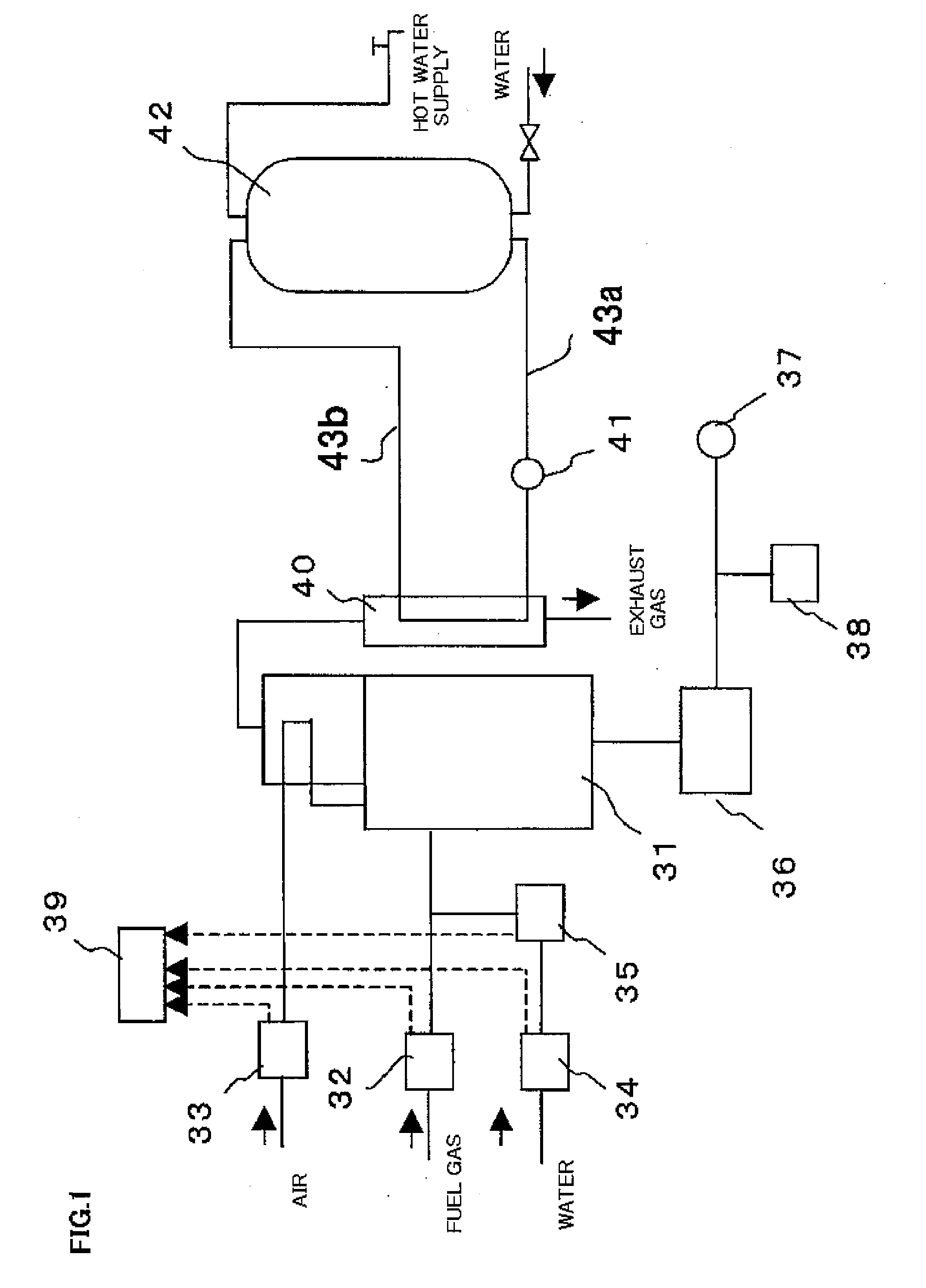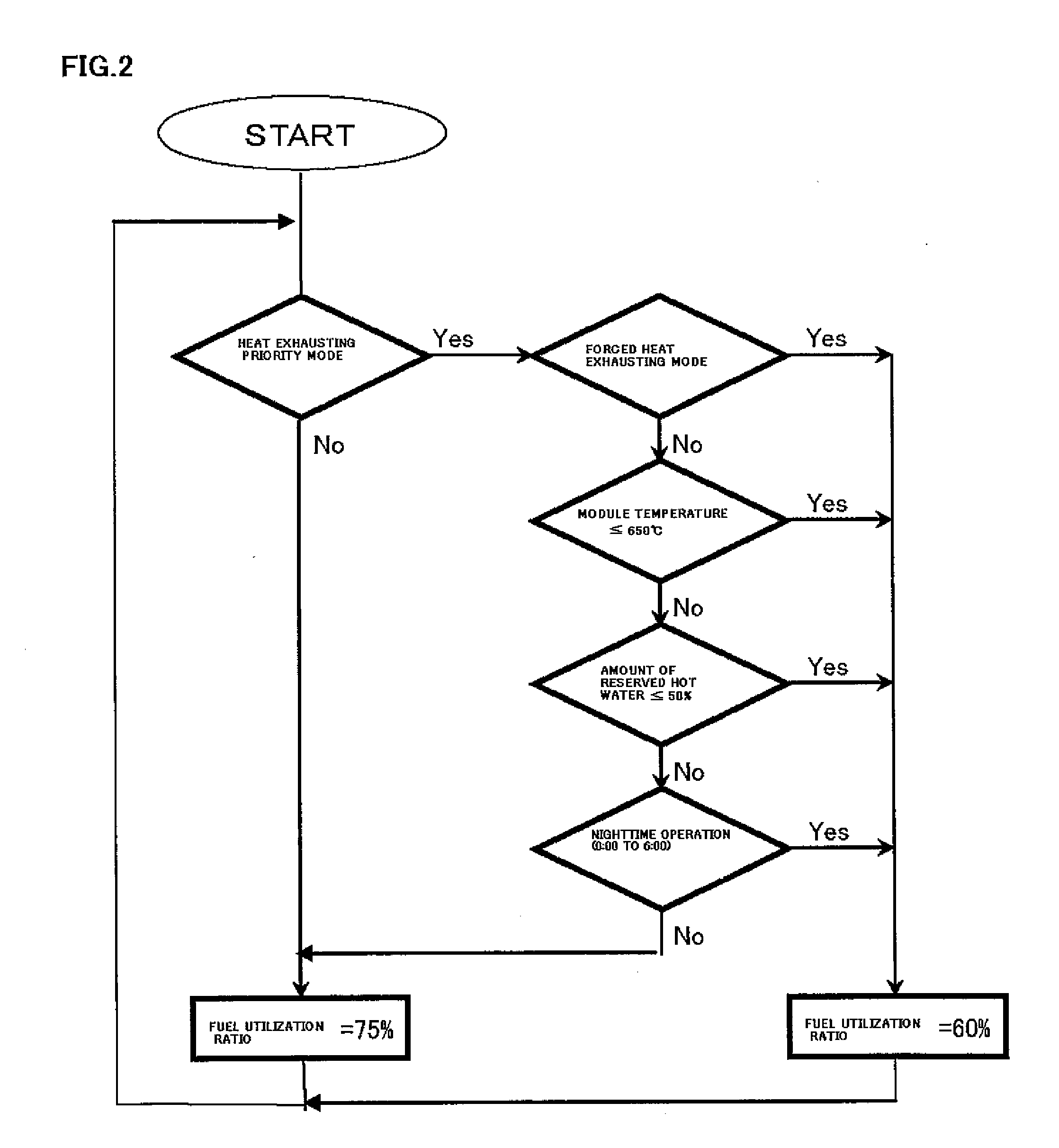Fuel Cell System
a fuel cell and system technology, applied in the field of fuel cell systems, can solve the problems of insufficient heat recovery of fuel, inability to quickly reform fuel, and inability to provide solid-oxide fuel cell systems, etc., and achieve the effect of stably providing to a load
- Summary
- Abstract
- Description
- Claims
- Application Information
AI Technical Summary
Benefits of technology
Problems solved by technology
Method used
Image
Examples
Embodiment Construction
[0028]The best mode for carrying out the invention will be described below with reference to the drawings. It should be noted that the following description is intended to give an example of the best mode of the invention only. It is easy for a so-called person skilled in the art to modify or alter a part of the invention into another embodiment within the sprit of the invention. Therefore, the following description is not intended to limit the scope of the claims of the invention.
[0029]FIG. 1 shows a fuel cell system according to the invention. As illustrated in FIG. 1, a fuel cell system of a solid-oxide fuel type of the invention includes a solid-oxide fuel cell 31, a fuel supply device 32 that supplies city gas, natural gas or the like to the fuel cell 31, an air supply device 33 that supplies air as an oxidizing agent to the fuel cell 31, a water supply device 34 that supplies water, and a fuel humidifying device 35 that humidifies a fuel gas supplied to the fuel cell 31. A con...
PUM
| Property | Measurement | Unit |
|---|---|---|
| power | aaaaa | aaaaa |
| power | aaaaa | aaaaa |
| temperature | aaaaa | aaaaa |
Abstract
Description
Claims
Application Information
 Login to View More
Login to View More - R&D
- Intellectual Property
- Life Sciences
- Materials
- Tech Scout
- Unparalleled Data Quality
- Higher Quality Content
- 60% Fewer Hallucinations
Browse by: Latest US Patents, China's latest patents, Technical Efficacy Thesaurus, Application Domain, Technology Topic, Popular Technical Reports.
© 2025 PatSnap. All rights reserved.Legal|Privacy policy|Modern Slavery Act Transparency Statement|Sitemap|About US| Contact US: help@patsnap.com



